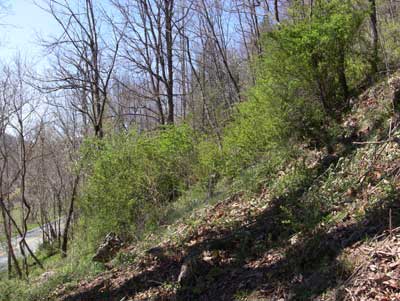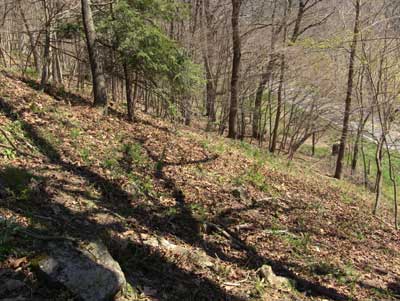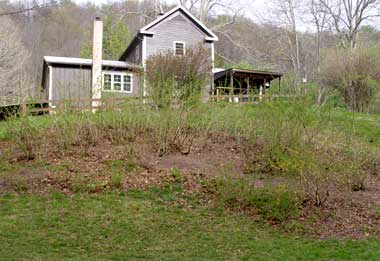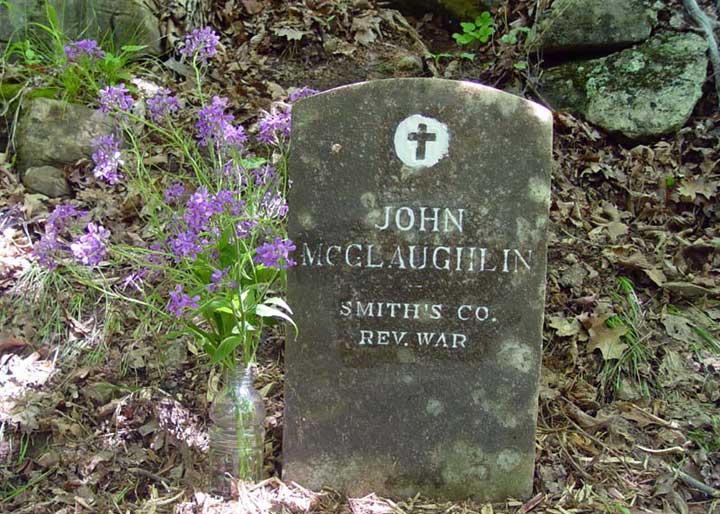

Updated: 25 December 2012

January 4th was a very cold day and we were gone until dusk. When we got home Beth was down and could not get up. We did everything we could without success and finally covered her up with several layers and packed hay around her, hoping that the morning sun would help. It did not. She thrashed around but could not get her legs under her. She was very elderly for a cow and suffered from severe arthritis so I finally put her down. She has now gone to join Duffy, her friend of many years, who died a couple of years ago. She is shown here on a pretty day last October.
Winter 2011-12 was relatively mild and virtually snow free. A 4-inch snow in late October and another in early March were the largest snowfalls of the winter. The whole season produced only 20 inches, even less than last winter. Kathy and Jeff gave me a set of snowshoes for Christmas in 2010 but I have still not had a chance to use them. Fall 2012 has produced only a few flurries.
This was the winter of my discontent. I was in the hospital a couple of times in January and spent most of the month recovering. Just as I was feeling pretty good I came down with a bad cold that lasted most of February and as soon as that eased off I contracted an intestinal virus. Fortunately, there was no snow plowing or shoveling, so my only real chores were caring for the animals and the sugaring. I spent a lot of time at the computer, where one of my projects was converting some old VHS tapes to digital files and learning to do video editing.
The highlight for January was a concert by Bill Staines. He was one of my favorite singers long ago but I had not heard him in ages; it was a great evening. Also in January, we started driving for Meals on Wheels once a month. This is an important service for the community and we get to go around and see some folks at the same time.
We opened the trees on 3 February but should have done it a week or two earlier. I’m sure we missed quite a lot, as the weather was so mild. I just cannot think sugaring in mid-January, especially while feeling poorly! Chris Moore was in his first year at WVU and wound up with an odd class schedule this semester — no classes on Monday or Friday — so he worked for us a couple of days a week. That was a great help while I was sick. He helped with opening, collected jugs when he was here, and did most of the taking down and cleaning up. With the late start it was a short season. We were all done and cleaned up by 12 March.
In last year’s news summary we reported on the purchase of an adjoining tract of land from Irene McAllister, which we call the McAllister Tract; there is a location map with that report. This land had been farmed by Irene’s grandfather but has lain fallow for 50 years or more. Naturally it has grown up over that time, largely to woods (which is fine) but it was also heavily infested with exotic-invasive species, primarily autumn olive, mutiflora rose, Japanese barberry and, to a lesser extent, oriental bittersweet. Eradication of these invasives was one of our primary challenges this year. Removal of the old woven-wire fences that enclosed it was another.
A benefit of the mild winter is that we were able to start work around the place much earlier and, with Chris here to help, a lot has been done. He started by removing more of that old fence and I helped when I was able. There was somewhere close to two miles of it and we are now about two-thirds done. Then we set into clearing thickets of the invasive species. These are all in among trees on a steep slope, most of it inaccessible to the tractor. We cut the large bushes with a chain saw or hand-held brush cutter, rolled the debris down the hill to the edge of the highway and chipped it up with the brush hog on the tractor. Higher up on the slope we cut it and just let it be. Where I could get in with the tactor, I pushed it up into big piles. Then we sprayed the smaller bushes with Crossbow®. We will come back over the next year or two and spray the new growth from the stubble left by the cutting process. It will take several treatments but we should have it under some measure of control in a couple of years. The two pix below show sections before and after the initial cutting job, looking south and north from the same spot on 7 April.


|
We persevered thru the heat of summer and have finally completed a first pass over the whole tract. There are surely some isolated bushes but I’m certain we have removed all of the dense infestations. In the course of this clearing I have cut a new loop road thru the tract, so we now have vehicle access to parts of it. Spraying will resume as soon as the bushes leaf out in the spring. We are also carrying the spray project to other parts of our property. In particular, I’m trying to finish cleaning up Stark Ridge, the western part of our place, where our cattle graze. Actually, it will never really be done because the property to our west is a petri dish for invasive plant propagation, but I’ll do the best I can. The problem here is mainly thistles and wingstems rather than shrubbery.
This March was the warmest March on record for our weather station by 4.5°F. That is a huge difference when you consider it is the average for all 31 days of the month. There were a few cool days early but much of March felt like May. All of the fruit trees blossomed early. Our pear tree, for example, blossomed on 26 March, whereas it usually comes out in the third week of April. Frost later on killed most of the fruit. There were virtually no apples; we felt lucky to get about a half-bushel of pears. We did get good raspberry and currant crops.

We did not spend every day on the new land. In March we repaired a lot of fence, driving something like 28 new posts. Then we attacked the forsythia patch near the house. It had been untouched for 20 years until last spring, when we did a little pruning without making much headway. We finally got thru the whole thing on 17 April. It will look kind of ragged for awhile (photo at right) but should be nice next spring.
I had a rough winter and then Char had a rough spring. She had a couple more TIAs (mini strokes) that were temporarily disabling and which put her in the hospital briefly. Each time her speech was affected but not much else. Her meds have been adjusted and she had several therapy sessions. She was making gains over the summer but had another episode in October. She is doing pretty well right now. Our main hope is that we can find the cause and put a stop to these recurring events.
We received a number of visitors over the course of the year and made a couple of trips ourselves. Tom and Paulette Irwin came in from Pennsylvanis for the first Maple Festival weekend in March. Tom was one of my best paddling buddies from Penn State days. We see them nearly every year, sometimes more than once. Kathy and Jeff Smith (daughter and son-in-law) live just down the pike in Roanoke, so we see them fairly often. Bill Gordon and Bill Nelson, two of my caving buddies from college, stopped one day in April. Bill Gordon and I get together every year but I had not seen Bill Nelson since leaving Charlottesville more than 50 years ago. He is featured in my report on two early trips to Butler Cave. Jim Snyder, another paddling buddy, made a brief stop in May and John Harshbarger was here in June. John was a real blast from the past. He was at VPI at the same time I was at UVa. We got together for caving quite a few times, including one memorable multi-day trip to Windy Mouth over a Christmas vacation. Daughters Beverly and Stephanie were here for the 4th of July while we were without electrical power (more on that below). Char then rode back to PA with Bev to visit granddaughter Lynne and play with our great-grandchildren. Later that month we made a return visit to the Irwins and the Carns in PA on the occasion of Tom & Paulette’s daughter Andrea’s wedding.
We were also pleased to meet Joe and Linda Crisp, from Artesia Wells, TX, who came by on an eastern trip. Joe’s father, Willard, bought some property 50 years ago that I had inherited thru my father’s family. We had never met so it was interesting to show them around here and to hear about things in Texas. New developments there may give us another story to tell next year.
Two of the guys who had been here last fall for a biology field trip returned to spend five days in late May on a senior project. They were supposed to send me a report on what they found but it has not happened. :o( They did help with some chores while here, one being to reset an old, very heavy gravestone on the place that had fallen over. The McGlaughlin farm is across the river but John wanted to be buried on our hill, so the story goes, so he could “keep an eye on them Hiners,” just around the bend. The photo was taken on Memorial Day.

| ||||||
| ||||||||||||||
| ||||||||||||
| ||||||||||||||
| ||||||||||||
| ||||||||||||

